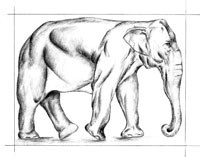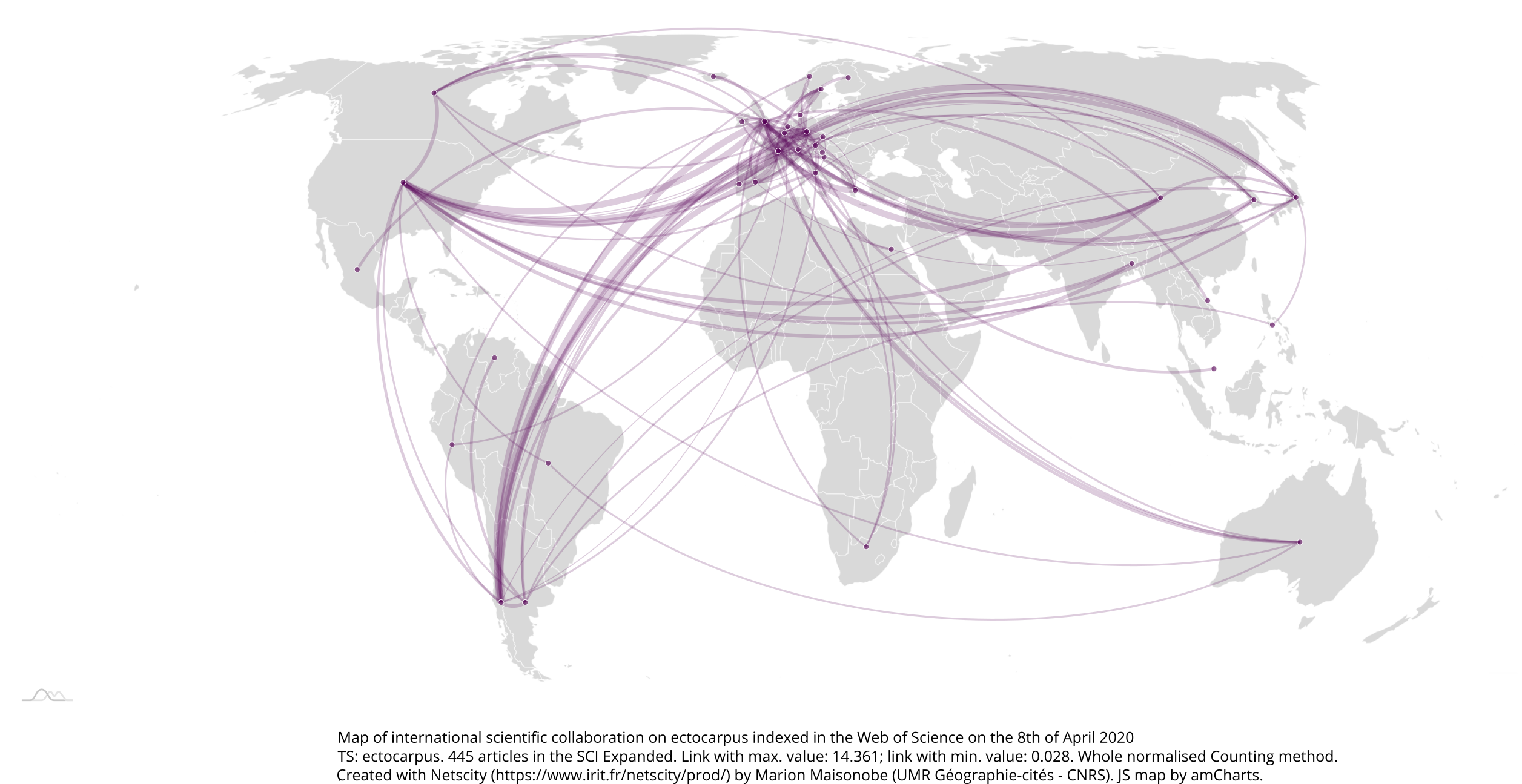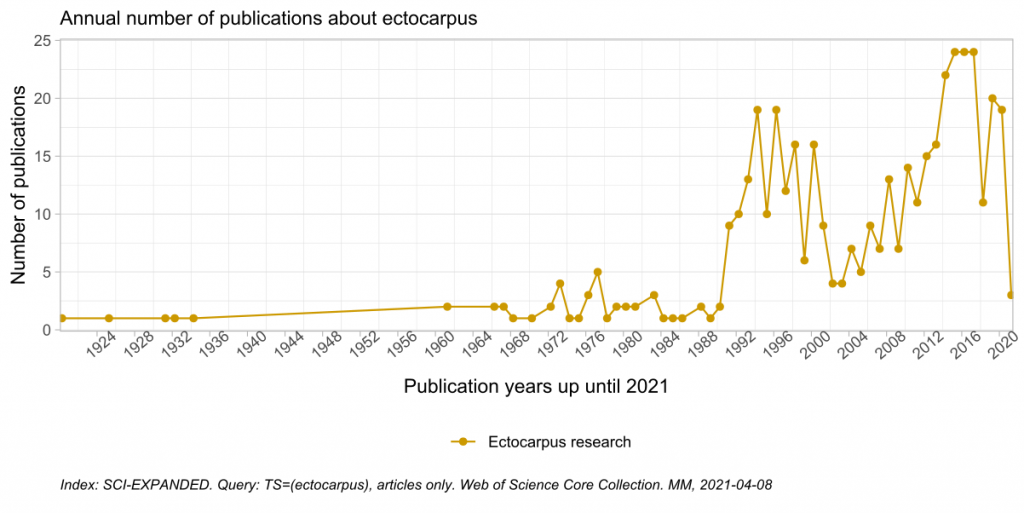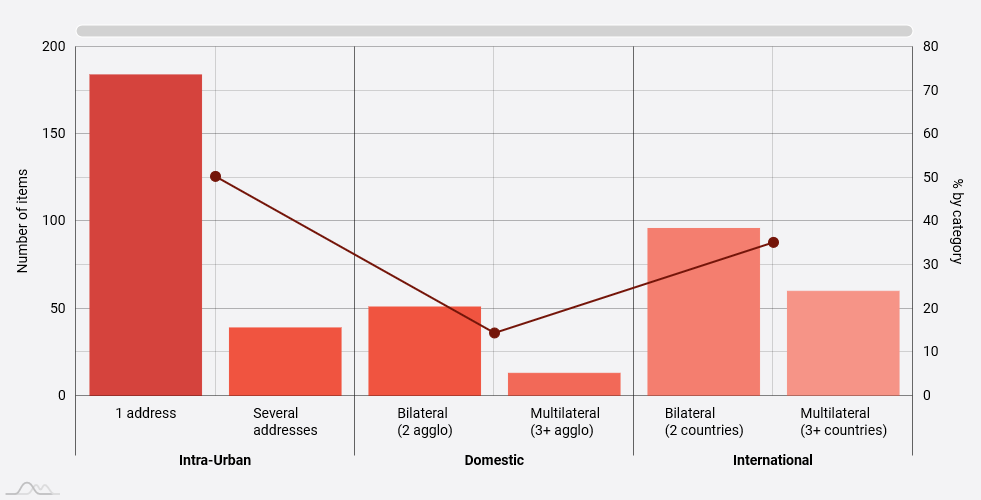Ectocarpus on Wikipedia :
Ectocarpus is a genus of filamentous brown alga that is a model organism for the genomics of multicellularity. It belongs to the family of the Ectocarpaceae.
Plant model organisms are necessary to understand the evolution of eukaryotes and thus the evolution of multicellularity, which is why the genus Ectocarpus appears as a model brown alga in evolutionary developmental biology. As a brown alga, Ectocarpus belongs to the Stramenopiles and takes the form of small filamentous algae with all the characteristics of a model organism: short life cycle (two months in the laboratory to obtain sporophytes – spore-producing generation – or gametophytes – gamete-producing generation), easy to manipulate due to its small size, rapid development with a large number of available replicates.
The genome of Ectocarpus siliculosus has been sequenced (214 Mbp), which is of major  interest for the use of this organism as a model. In addition, many analytical tools are already available to answer different research questions, e.g. creation of mutants by UV or chemical mutagenesis, immunohistochemistry, or single cell sequencing. The limitations of the model lie in the difficulties of making modifications within the genome and therefore using reverse genetics approaches (from gene to phenotype), although the CRISPR-Cas9 system is currently being considered for this type of approach in Ectocarpus
interest for the use of this organism as a model. In addition, many analytical tools are already available to answer different research questions, e.g. creation of mutants by UV or chemical mutagenesis, immunohistochemistry, or single cell sequencing. The limitations of the model lie in the difficulties of making modifications within the genome and therefore using reverse genetics approaches (from gene to phenotype), although the CRISPR-Cas9 system is currently being considered for this type of approach in Ectocarpus
Source : https://fr.wikipedia.org/wiki/Ectocarpus, 2021-04-07; from Coelho, S.M., Peters, A.F., Müller, D. et al. Ectocarpus: an evo-devo model for the brown algae. EvoDevo 11, 19 (2020). https://doi.org/10.1186/s13227-020-00164-9
Ectocarpus in the ISTEX database
2908 documents from 17 corpus, among which 290 journals, 14 book series and 4 books.
The corpus goes from 1827 to 2017. Within the corpus, 129 documents date back to the XIXth century, 2570 from after 1950, and 1170 from after 2000.
3 different languages are identified: English (2633 of which 1162 documents were published after 2000), German (172 of which 3 after 2000), and French (22 of which 4 after 2000). 81 documents are of unknown language (of which 8 were published after 2000).
Download link of the corpus file downloaded on 2021-03-30: corpus-file-ISTEX-ectocarpus
[sdm_download id=”1247″ fancy=”0″]
[sdm_download_counter id=”1247″]
Ectocarpus in the Web of Science Core Collection
572 documents including 463 articles, 45 reviews, 29 abstracts, 17 conference proceedings, 11 notes, 9 editorials, 6 book chapters, 6 letters, 2 corrections, 1 bibliographical item, 1 correction/addition and 1 early access document.
If we limit ourselves to the 463 documents of the article type, the corpus extends from 1920 following the following dynamics:
The decrease observed at the end of the period is simply linked to the fact that the data is not yet complete for the closest years (indexation still in progress). Nevertheless, there seems to be a plateau in the annual progression of the number of publications on the subject since 2015 (24 articles per year in 2015, 2016 and 2017).
5 different languages are identified: English (455 articles); French (4 articles); German (2 articles); Chinese (1 article), and Spanish (1 article).
Query: Ectocarpus (Topic) and Articles (Document Types)
Download link of the corpus file downloaded on 2022-03-10: ectocarpus_2022
[sdm_download id=”1295″ fancy=”0″]
[sdm_download_counter id=”1295″]
The Ectocarpus corpus on NETSCITY (WoS CC)
The geocoded corpus consists of 443 unique publications. Of these publications, 220 come from at least two distinct urban areas (agglomerations), or 50% of the total.
156 publications, i.e. 35%, are the result of international cooperation, and among them 92 are the result of intercontinental cooperation, i.e. 21% of the total corpus.
241 urban agglomerations and 45 countries participated in this corpus.
Their distribution covers the 5 following continents: Europe (23 countries), Asia (10 countries), Americas (8 countries), Africa (3 countries) and Oceania (1 country).
209 agglomerations and 37 countries participated in at least one collaboration, i.e. 86.72% of the involved agglomerations and 82.22% of the involved countries.
By cumulating and normalizing the contributions (Fractionning counting method), we can see that it takes 41 urban agglomerations and 5 countries to get 2/3 of the corpus.
A total of 1229 distinct addresses are associated with this corpus. All these addresses have been geolocated thanks to the NETSCITY web application, available at: https://www.irit.fr/netscity.
Geographic pattern of collaboration of articles from the ectocarpus corpus (WoS CC, 2022). Made with the geospatial web application NETSCITY.
NETSCITY presentation on the Ectocarpus corpus application case – Geocollab Project
Contact: netscity<at>irit.fr



